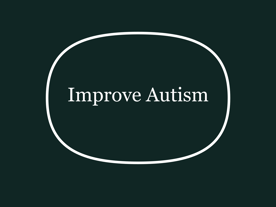Folinic acid improves verbal communication in children with autism and language impairment: a randomized double-blind placebo-controlled trial
Authors:
Frye, R.E., Slattery, J., Delhey, L., Furgerson, B., Strickland, T., Tippett, M., Sailey, A., Wynne, R., Rose, S., Melnyk, S. and Jill James, S
Study Overview
Design: The study was a randomized, double-blind, placebo-controlled trial.
Participants: It involved 48 children with non-syndromic autism spectrum disorder (ASD) and language impairment. The mean age was 7 years and 4 months, with 82% being male.
Participants were divided into two groups:
Folinic Acid Group: 23 children received high-dose folinic acid (2 mg/kg per day, up to a maximum of 50 mg per day) for 12 weeks.
Placebo Group: 25 children received a placebo for the same duration.
Primary Finding: Verbal Communication Improvement
Measurement: Improvement in verbal communication was the primary outcome, assessed using standardized, ability-appropriate instruments.
Result: The folinic acid group showed a statistically significant improvement in verbal communication compared to the placebo group.
Effect Size: The improvement was 5.7 standardized points (95% confidence interval [CI]: 1.0, 10.4).
Statistical Significance: This result had a medium-to-large effect size (Cohen's d = 0.70), indicating a meaningful impact.
Influence of Folate Receptor-α Autoantibody (FRAA) Status
Subgroup Analysis: The study examined the role of FRAA status (folate receptor-alpha autoantibody presence) in treatment response.
FRAA-Positive Participants:
Improvement: Children who tested positive for FRAA showed an even greater improvement in verbal communication when treated with folinic acid compared to the placebo group.
Effect Size: The improvement was 7.3 standardized points (95% CI: 1.4, 13.2) with a large effect size (Cohen's d = 0.91).
Implication: Folinic acid treatment appears to be particularly effective in children with ASD who are FRAA-positive.
Secondary Outcomes
Additional Measures: The study also assessed improvements in other behavioral domains using standardized tools:
Vineland Adaptive Behavior Scale: Significant improvements were observed in specific subscales (e.g., daily living skills) in the folinic acid group compared to the placebo group.
Aberrant Behavior Checklist: Reductions in irritability, stereotyped behavior, hyperactivity, and inappropriate speech were significantly greater in the folinic acid group.
Autism Symptom Questionnaire: Improvements in symptom severity were noted in the folinic acid group.
Behavioral Assessment System for Children: Certain subscales showed significant enhancements in the folinic acid group.
Overall Trend: Across these measures, the folinic acid group consistently outperformed the placebo group in various behavioral improvements.
Safety Profile
Adverse Effects: There was no significant difference in adverse effects between the folinic acid and placebo groups.
Conclusion: High-dose folinic acid treatment was well-tolerated, suggesting a favorable safety profile in this trial.
Limitations and future directions
Sample Size: The study included only 48 participants, making it a small trial. The authors emphasize that these findings are preliminary.
Recommendation: Larger, multicenter studies with longer durations are needed to confirm these results and further validate the efficacy and safety of folinic acid treatment.
Mechanistic Insight
Potential Mechanism: Folinic acid may benefit children with ASD, particularly those with FRAA, by crossing the blood-brain barrier via a secondary mechanism (the reduced folate carrier) at high doses. This could address disruptions in folate metabolism linked to the presence of FRAAs, potentially improving neurological function and communication.
Summary of study:
The main finding of this study was that children who recieved a high dose of folinic acid shown
The main finding is that high-dose folinic acid (2 mg/kg per day, up to 50 mg/day) administered over 12 weeks significantly improved verbal communication in children with autism and language impairment compared to a placebo.
This effect was especially pronounced in children positive for folate receptor-alpha autoantibodies (FRAA), with additional benefits observed in other behavioral domains. The treatment showed no notable safety concerns in this small trial, though further research is required to substantiate these preliminary findings.
https://pubmed.ncbi.nlm.nih.gov/27752075/
doi: 10.1038/mp.2016.168


